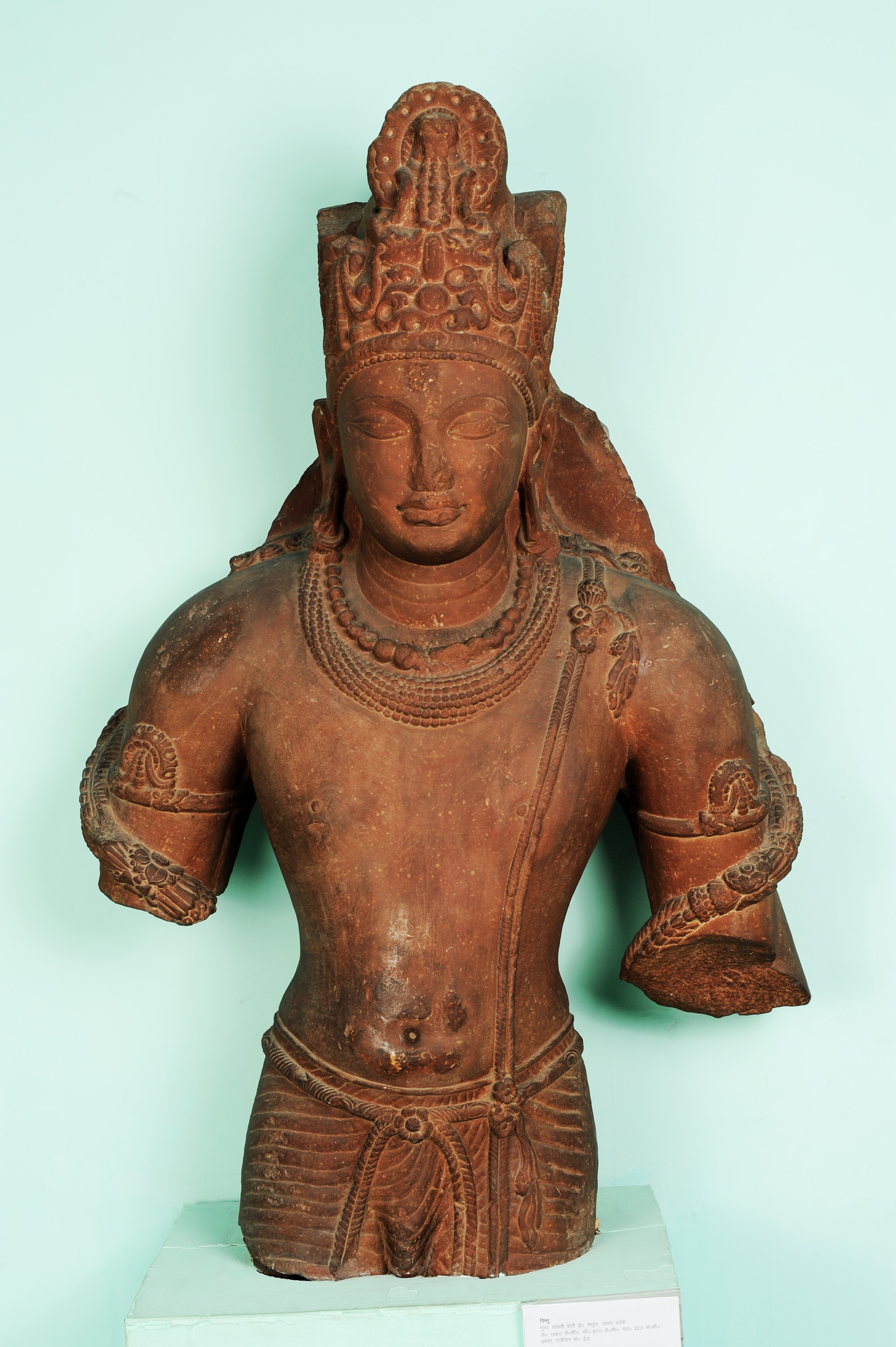Vishnu
Original Location: Mathura, Uttar Pradesh
Present Location: National Museum, New Delhi
Date: 5th Century CE
Period: Ancient
Material: Sandstone
Objects: Sculpture
Style: Gupta
Dimensions: H 109 x W 69 x D 22 cm
Credits: National Museum, New Delhi
This beautifully carved sculpture of Vishnu is made of stone. It can be traced back to 5th century CE. Its height is 109.0 cm, width 67.0 cm and depth 22.0 cm. It is located at the Gallery of Gupta Art at the National Museum, New Delhi
Gupta age has often been referred to as the classical age of Indian art. This points to the refinement in art and architecture achieved in this period (300-600 CE). Particular credit is due to the perfect balance it achieved between the ideals of beauty, sensuality and spirituality. Mathura and Sarnath were major centres of production during this period. In the Gupta art, Vishnu images appear in varied forms. Some show him in an anthropomorphic form of a Varaha or a boar, in others he is depicted in human form as seen in this sculpture. Gupta art shows a continuity from the Mathura and Gandhara art but incorporates it with new features of iconography drawn from Hindu, Buddhist and Jain traditions.
The sculpture of Vishnu may be seen as the result of the larger socio-religious trend of the emergence of Bhakti devotion and image worship during the Gupta period. The Gupta period witnessed the beginning of construction of the temple complex which began to feature a sanctum sanctorum (Garbhagriha) in which images were placed. Vaishnavism received unbound patronage from the Gupta rulers which contributed to its popularity in different parts of the kingdom. According to a Puranic text written during the reign of Chandragupta II, the king was endowed with the divine energy of Vishnu. His union with Shri Lakshmi, the Goddess of wealth who was earlier popular with the Vaishyas and Shudras increased his popularity amongst lower social groups .
The sculpture is made of sandstone showing Vishnu in a human form. He is wearing an elaborate headgear or kritimukuta. A sacred thread runs over the left side of his body and he is adorned with two necklaces, one of pearls and the other of semi precious beads coupled with armbands on both the arms. The facial features have been sculpted in a way to show a serene and reposed state of the deity with arched eyebrows, closed eyes, full lips and folds around the neck revealing sheer sculpting brilliance.
This period witnessed the rise of the Bhakti doctrine. Moreover, Vaishnavism as a cult developed with messianic and incarnational (avtarvada) ideology. According to some texts, Vishnu has thirty-nine incarnations, however, the standard number is believed to be ten. It usually includes Matsya (fish), Kurma (tortoise), Varaha (boar), Narasimha (man lion), Vamana (dwarf), Parashurama, Rama, Krishna, Buddha and Kalki. Vishnu is believed to have arrived in these incarnations as a savior who will also appear at the end of the Kali age to overthrow mlecchas(foreigners and barbarians) and restore dharma.
 Government of Indiaa
Government of Indiaa


 Recognizing the ongoing need to position itself for the digital future, Indian Culture is an initiative by the Ministry of Culture. A platform that hosts data of cultural relevance from various repositories and institutions all over India.
Recognizing the ongoing need to position itself for the digital future, Indian Culture is an initiative by the Ministry of Culture. A platform that hosts data of cultural relevance from various repositories and institutions all over India.
